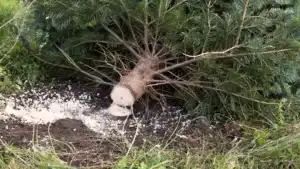Wood Ash for Snow Ideas 2025
- September 4, 2023
- 0 comment
Once upon a wintery day, when the world was painted white and footprints left ephemeral trails on fresh snow, a quiet, age-old trick was being utilized in some homes: the use of wood stove ash to combat snow and ice. While rock salt and sand often come to mind as the go-to remedies for slippery sidewalks, there’s a lesser-known, sustainable option that not only provides excellent traction but also enriches the soil. Let’s delve into the world of using wood stove ash for snow.
A Historical Overview
The art of using wood stove ash on snow is not some modern-day innovation. It harks back to an era when commercial salts and chemical deicers were unheard of. Communities of yesteryears, relying heavily on wood for warmth, recognized the snow-melting properties of ash, making it a common winter ally.
WOOD ASH: The Science Behind the Melting Magic
Wood ash is more than just a byproduct of a roaring fire. It’s a slow-acting melt solution, having a dual mode of action:
Potassium Power

Every log of wood that crumbles into ashes releases an array of chemical components, and potassium stands out as a prominent constituent. This element plays a pivotal role in ash’s deicing capabilities.
When potassium comes into contact with ice, a fascinating interaction unfolds. The potassium interferes with the crystalline structure of the ice, weakening the bonds between the water molecules. As a result, the ice’s ability to stay solid is compromised, leading to a gradual melting process.
Moreover, this potassium content doesn’t just fade away after melting the ice. It becomes a part of the soil, acting as a nutrient. This ensures that the wood ash, when used as a snow melter, contributes to the environment in more ways than one.
Sun Attraction

A game of colors and physics is at play here. The dark hue of wood ash contrasts starkly with the pristine white of snow. When this dark ash is spread over a snowy surface, it immediately begins to absorb sunlight, much like a black shirt on a summer’s day.
This absorption mechanism can be attributed to the principle that darker surfaces are better absorbers of light and heat. As the ash particles soak up the sunlight, they naturally heat up. This warmth is then transferred to the surrounding snow, which aids in hastening the melting process.
Furthermore, the grainy texture of the ash provides added traction, making walkways and driveways less treacherous during the snowy months.
In essence, wood ash serves as a bridge between the past and the present, proving that sometimes, nature’s simplest solutions can be the most effective. As the icy months approach and your fireplace crackles with life, remember that the ash it produces is more than just residue—it’s a winter warrior in its own right.
Advantages of Using Wood Stove Ash
1. Green Footprint
The environmental footprint of our actions is becoming an increasingly pressing concern. In this context, wood ash shines bright:
- Minimal Contamination: Unlike rock salt and other chemical melters that leach into our water systems and potentially harm aquatic life, wood ash is benign. There’s no toxic runoff or adverse environmental aftermath to be concerned about.
- Soil Enrichment: But the environmental benefits of wood ash go beyond just the absence of harm. The ash is abundant in nutrients like calcium, magnesium, and potassium, which enrich the soil. When the snow melts and carries the ash into the ground, it’s not causing contamination; it’s aiding in fertilization.
2. Economical Brilliance
Budget-conscious homeowners and property managers have a friend in wood ash:
- Resourceful Recycling: The ashes are a natural byproduct of wood-burning stoves and fireplaces. Instead of viewing it as waste, it becomes a resource, turning one man’s trash into another man’s treasure.
- Savings Galore: Utilizing ash means less dependence on store-bought deicers. Over an entire winter season, these savings can be substantial, especially for larger properties or areas with frequent snowfall.
3. Grip and Safety
Winter’s beauty often comes with a slippery side, but wood ash is here to help:
- Natural Traction: The grainy texture of wood ash, when sprinkled over icy patches, offers immediate grip. This reduces the chances of slipping, making pathways and driveways safer for pedestrians and vehicles.
- Dual Action: While the ash provides immediate traction, its inherent properties also work to slowly melt the underlying ice, making it a two-pronged approach to winter safety.
Creative Exploits with Ash
1. Snow Artistry

There’s an artist in each of us, waiting for the right canvas. And what could be more enchanting than a pristine, untouched layer of snow? With wood ash at your disposal, you can create a striking juxtaposition of dark and light. By meticulously sprinkling ash, you can create silhouettes, patterns, or even messages. These temporary artworks not only beautify your yard but also spark conversations, making your home the talk of the neighborhood. Just remember that when the snow melts, the art fades, leaving behind only memories and anticipation for the next winter canvas.
2. Wildlife Discovery

The beauty of nature often lies hidden in its subtlest traces. The nocturnal creatures that roam our gardens leave behind fleeting footprints in the snow – a delicate trace of their nightly escapades. By simply scattering wood ash over snow, you transform your yard into a detective’s playground. The ash accentuates the footprints, revealing intriguing patterns the next morning. Whether it’s the wandering path of a rabbit or the stealthy steps of a fox, this technique offers a fun and educational opportunity to connect with nature right in your backyard.
3. Ice Art Enhancements

The translucent charm of ice sculptures and igloos captivates many. But with wood ash, these icy structures can take on an entirely new dimension. Strategically using ash can highlight contours, add depth, or provide shading, lending a more realistic and dramatic effect. By smudging, layering, or stenciling with ash, ice artists can achieve a wide range of visual effects, enhancing the intricacy of their frozen masterpieces. This technique ensures that your sculptures stand out, drawing admiration from onlookers and fellow ice art aficionados.
Best Practices for Using Wood Ash
- Proper Storage: It’s imperative to store ash in a moisture-free environment. A sealed container works best, ensuring the ash remains dry and effective.
- Even Distribution: To harness its full potential, wood ash should be spread uniformly over the snow or ice. It ensures optimal traction and efficient melting.
- Periodic Reapplication: Depending on snowfall patterns and wind conditions, ash might need reapplication to maintain its effectiveness.
Points of Caution
- Residual Marks: One potential downside of ash is its tendency to leave behind grayish streaks, especially if tracked indoors.
- Comparatively Mild Melting: While ash has its merits, its melting capacity doesn’t quite match up to commercial rock salts.
- Wood Variability: The type of wood combusted influences the ash quality. Hardwoods, such as oak or maple, generally yield superior, more potent ash than softwoods like pine.
Whatever your interest, we’ve got you covered. For a deep dive into the myriad applications of wood ash, click here. Unravel its history, understand its science, and maybe even find a few DIY tricks to try at home.
Conclusion
As snow blankets the landscape and winter’s chill permeates the air, it’s heartening to know that the wood stove, a symbol of warmth and comfort, offers another gift in its ashes. By understanding its properties and potential, one can effectively turn wood ash into an ally against winter’s icy grip. The tale of wood and snow is truly a narrative where ancient wisdom meets modern needs.
Frequently Asked Questions
- How long does it take for wood ash to melt snow?
The speed at which wood ash melts snow depends on various factors like sunlight exposure, temperature, and the thickness of the snow layer. While wood ash begins working immediately by absorbing sunlight, it might take a few hours to see significant melting. - Is there any risk of pets getting irritated by wood ash on snow?
Generally, wood ash is not harmful to pets. However, if ingested in large amounts, it might cause stomach discomfort. Always monitor pets around areas where ash has been spread and wash their paws if they’ve walked over it. - Can wood ash be used with other deicing agents?
Yes, wood ash can be combined with other deicing agents like rock salt or sand. The ash provides an immediate grip and attracts sunlight, while the other agents offer their own melting properties. - Will wood ash harm my lawn when the snow melts?
On the contrary, wood ash can be beneficial to lawns. It contains nutrients like calcium, magnesium, and potassium. However, excessive use might alter soil pH, so moderation is key. - How do I store wood ash for use during the winter?
Store wood ash in a dry, sealed container to prevent it from getting damp. Ensure the container is placed in a location away from moisture or rainfall. - Can wood ash be used on roofs to melt snow?
It’s not recommended to use wood ash on roofs. The ash can cause staining and could clog gutters when the snow melts. - Does the type of wood affect the efficiency of the ash in melting snow?
Different woods produce ashes with varying mineral contents. Generally, hardwoods produce ash with higher nutrient content, but most wood ashes will have some snow-melting ability due to their dark color. - How often should I reapply wood ash during continuous snowfall?
During heavy snowfall, wood ash may get buried under fresh snow, reducing its effectiveness. In such cases, reapplication every few hours or after significant snow accumulation is recommended. - Can I use wood ash on my car to melt ice?
While wood ash can melt ice, it’s not advisable to use it on cars as it may scratch the paint or leave a residue that’s hard to clean. - How does wood ash compare to commercial eco-friendly deicers?
Wood ash is a natural and eco-friendly deicer, beneficial for the soil. While commercial eco-friendly deicers are formulated for optimal melting, wood ash is free (for those with wood stoves) and doubles as a soil enhancer.
We’d love to hear from you! Share your personal experiences and insights about using Wood Ash for Snow in 2025 in the comments section below. Your feedback could assist fellow readers in making eco-friendly winter choices!

David Murray
Forestry AuthorI'm David Murry, a forestry equipment specialist with a focus on chainsaw operation. With over 13 years of experience, I've honed my skills in operating and maintaining a wide range of machinery, from chainsaws to log splitters. My passion for the outdoors and commitment to sustainable forestry drive my work, which emphasizes safety, efficiency, and staying updated with industry advancements. Additionally, I'm dedicated to sharing my expertise and promoting environmental awareness within the forestry community.













Leave your comment